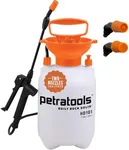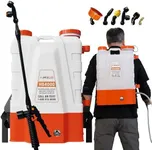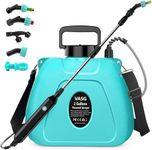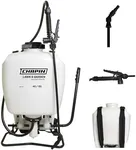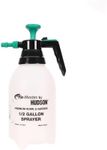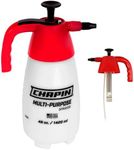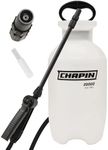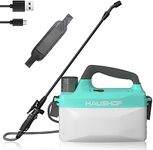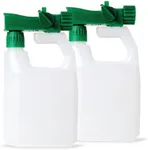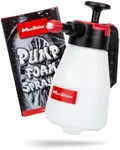Buying Guide for the Best Garden Sprayers
Choosing the right garden sprayer can make a significant difference in the health and appearance of your garden. A garden sprayer is a tool used to apply fertilizers, pesticides, herbicides, and water to plants. The right sprayer will help you distribute these substances evenly and efficiently, ensuring your plants get the care they need. When selecting a garden sprayer, consider the size of your garden, the type of plants you have, and the specific tasks you need the sprayer to perform. Here are some key specifications to consider when choosing a garden sprayer.CapacityCapacity refers to the amount of liquid a sprayer can hold. This is important because it determines how often you will need to refill the sprayer while working. Small sprayers, with capacities of 1-2 liters, are suitable for small gardens or spot treatments. Medium sprayers, holding 3-5 liters, are ideal for medium-sized gardens. Large sprayers, with capacities of 6 liters or more, are best for large gardens or extensive spraying tasks. Choose a capacity that matches the size of your garden and the frequency of your spraying tasks.
Type of SprayerThere are several types of garden sprayers, including handheld, backpack, and wheeled sprayers. Handheld sprayers are lightweight and easy to use, making them ideal for small gardens or quick tasks. Backpack sprayers are worn on the back and are suitable for medium to large gardens, offering more capacity and reducing the need for frequent refills. Wheeled sprayers are the largest and are best for very large gardens or professional use, as they can hold a significant amount of liquid and are easy to maneuver. Consider the size of your garden and your physical comfort when choosing the type of sprayer.
MaterialThe material of the sprayer affects its durability and weight. Common materials include plastic, stainless steel, and brass. Plastic sprayers are lightweight and affordable but may not be as durable as metal options. Stainless steel sprayers are more durable and resistant to corrosion, making them a good choice for frequent use. Brass sprayers are also durable and offer a classic look but can be heavier. Choose a material that balances durability with ease of use, based on how often you plan to use the sprayer and the types of chemicals you will be applying.
Nozzle TypeThe nozzle type determines the spray pattern and coverage. Adjustable nozzles allow you to change the spray pattern from a fine mist to a strong stream, providing versatility for different tasks. Fixed nozzles offer a consistent spray pattern and are simpler to use. Fan nozzles create a wide, even spray, ideal for covering large areas quickly. Cone nozzles produce a circular spray pattern, suitable for targeted applications. Choose a nozzle type that matches the specific needs of your garden, such as broad coverage for lawns or precise application for individual plants.
Pump MechanismThe pump mechanism is how the sprayer builds pressure to distribute the liquid. Manual pump sprayers require you to pump a handle to build pressure, which can be tiring for large tasks but offers control over the spray. Battery-powered sprayers use a motor to build pressure, reducing physical effort and providing consistent pressure, making them ideal for larger gardens or frequent use. Choose a pump mechanism that matches your physical capabilities and the size of your garden.
Ease of CleaningEase of cleaning is important to prevent clogging and ensure the longevity of your sprayer. Sprayers with removable parts and wide openings are easier to clean. Some sprayers come with cleaning kits or self-cleaning features. Regular cleaning is essential, especially if you use different chemicals, to prevent residue buildup and cross-contamination. Choose a sprayer that is easy to disassemble and clean, especially if you plan to use it frequently or with various substances.
